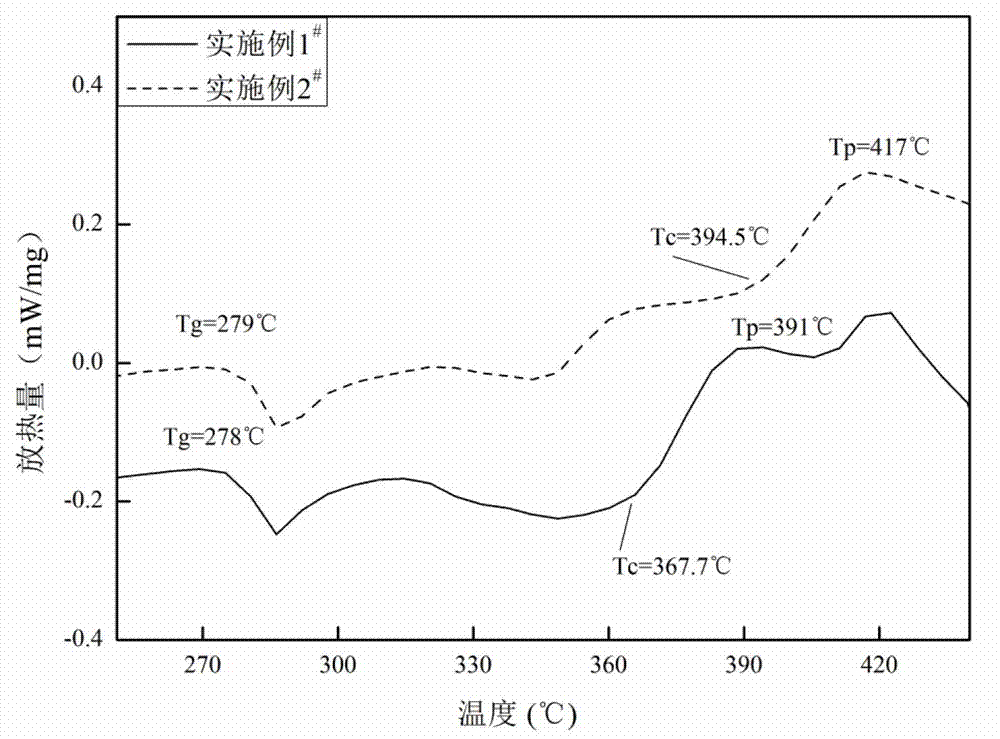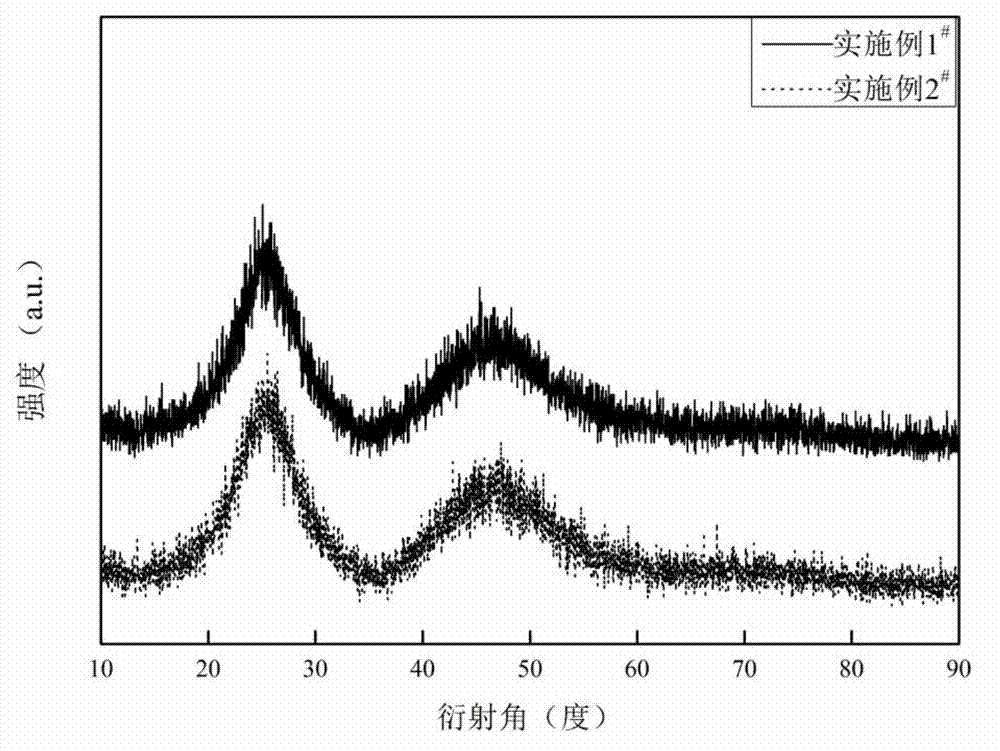Erbium ion doped intermediate infrared luminous fluorine tellurate glass
A technology of infrared luminescence and fluorotellurite, applied in the field of fluorotellurite glass, to achieve the effect of improving thermal stability and chemical stability
- Summary
- Abstract
- Description
- Claims
- Application Information
AI Technical Summary
Problems solved by technology
Method used
Image
Examples
Embodiment 1
[0036] Composition as in Table 1 1 # As shown, the specific preparation process is as follows:
[0037] According to table 1 in 1 # The mole percentage of the glass composition, calculate the corresponding weight of each composition, weigh each raw material and mix evenly; put the mixture into a platinum crucible and melt it in a silicon carbide rod electric furnace at 850 ° C, and clarify it for 15 minutes after complete melting. The molten glass is poured into a preheated mold; quickly move the glass into a muffle furnace heated to 270°C, keep it warm for 4 hours, then cool down to room temperature at a rate of 10°C / hour, and take out the glass sample after complete cooling.
[0038] The test results for this glass are as follows:
[0039] Take a small sample after annealing, grind it into a fine powder with an agate mortar, and carry out differential thermal analysis test and XRD analysis.
[0040] The annealed samples were processed into 20×20×4.0mm glass pieces and pol...
Embodiment 2
[0043] Composition as in Table 1 2 # As shown, the specific preparation process is as follows:
[0044] According to table 1 in 2 #The mole percentage of the glass composition, calculate the corresponding weight of each composition, weigh each raw material and mix evenly; put the mixture into a platinum crucible and melt it in a silicon carbide rod electric furnace at 850 ° C, and clarify it for 15 minutes after complete melting. The molten glass is poured into a preheated mold; quickly move the glass into a muffle furnace heated to 270°C, keep it warm for 4 hours, then cool down to room temperature at a rate of 10°C / hour, and take out the glass sample after complete cooling.
[0045] The test results for this glass are as follows:
[0046] Take a small sample after annealing, grind it into a fine powder with an agate mortar, and carry out differential thermal analysis test and XRD analysis. Compared with Example 1, the heavy metal oxide TeO of the present invention 2 The ...
Embodiment 3
[0050] Composition as in Table 1 3 # As shown, the specific preparation process is as follows:
[0051] According to table 1 in 3 # The mole percentage of the glass composition, calculate the corresponding weight of each composition, weigh each raw material and mix evenly; put the mixture into a platinum crucible and melt it in a silicon carbide rod electric furnace at 850 ° C, and clarify it for 15 minutes after complete melting. The molten glass is poured into a preheated mold; quickly move the glass into a muffle furnace heated to 270°C, keep it warm for 4 hours, then cool down to room temperature at a rate of 10°C / hour, and take out the glass sample after complete cooling.
[0052] The test results for this glass are as follows:
[0053] Take a small sample after annealing, grind it into a fine powder with an agate mortar, and carry out differential thermal analysis test and XRD analysis.
[0054] The annealed samples were processed into 20×20×4.0mm glass pieces and pol...
PUM
| Property | Measurement | Unit |
|---|---|---|
| wavelength | aaaaa | aaaaa |
Abstract
Description
Claims
Application Information
 Login to View More
Login to View More - R&D
- Intellectual Property
- Life Sciences
- Materials
- Tech Scout
- Unparalleled Data Quality
- Higher Quality Content
- 60% Fewer Hallucinations
Browse by: Latest US Patents, China's latest patents, Technical Efficacy Thesaurus, Application Domain, Technology Topic, Popular Technical Reports.
© 2025 PatSnap. All rights reserved.Legal|Privacy policy|Modern Slavery Act Transparency Statement|Sitemap|About US| Contact US: help@patsnap.com



